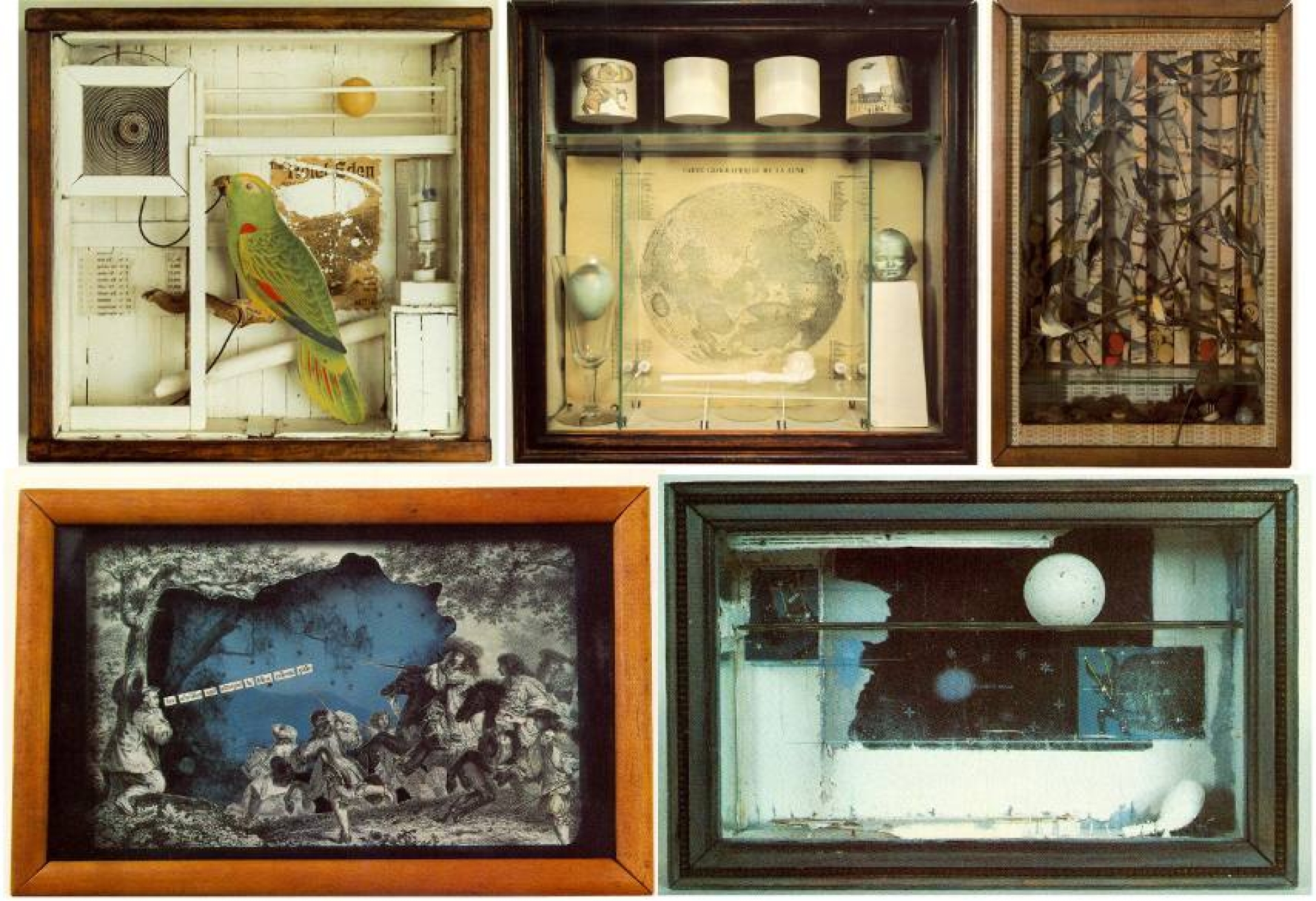Joseph Cornell
Lewis Mumford wrote: “All art is a sort of hidden biography. The problem of the painter is to tell what he knows and feels in such a form that he still, as it were, keeps his secrets.”
The artist Joseph Cornell had to create his own world to keep his secrets. He lived a childhood of rich imagination and severe, polite isolation. His sister recalled an adolescent Cornell waking her in the middle of the night, “He was in the grips of a panic from the sense of infinitude and the vastness of space as he was becoming aware of it from studying astronomy.”
As an adult, he never moved out of his mother’s house in Queens. Cornell sold textiles door-to-door in the city and turned the basement into his art studio. He took discarded bits and bobs found on his searches through Times Square bookstores and junk shops, creating shadow boxes of paper birds and soap bubbles, giving titles to his internal narratives of old hotels and lost children. When he couldn’t find appropriate boxes for his found items, he built his own, aging them until they seemed found also, they became natural containers for the collections inside. Random chance guided his searches. He would reassemble his found items like he was building poems, juxtaposing images on instinct, linking ideas for others to make their own associations.
Cornell’s collages and boxes are akin to the early stage of dream work before interpretations are applied. In his work is the unnamable, the non-chronological connections between all things -- the idea that, if there is a god of some kind, it is beyond any description. Any meaning we place on it can only be mistranslated as the shift to language changes the meaning of the images. Cornell tried to explain a world for which he had no hard evidence and no explanations.
The day he died, Joseph Cornell told his sister over the phone: “I wish I had not been so reserved.”

